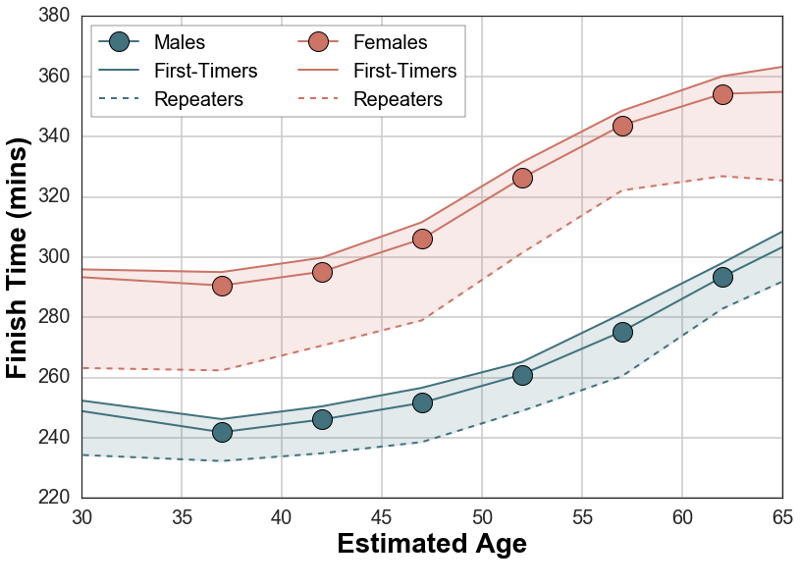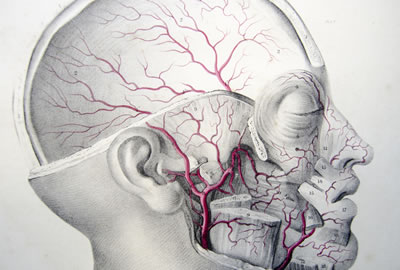Strategy #1: You Can Find Meaning In Old Age
Part 1 - Meaning in Old Age
Seven Strategies for Positive Aging by: Robert D. Hill, Ph.D.
Summarized by: Justin Hill, M.Ed.
If you're around the 60 to 80-year range, you may wonder how many years you have left to live. You might ask “how can I be happy in the process?” Many polls tell us that what most people fear about growing old is loss. (The Social Security Administration has a longevity calculator that computes your predicted lifespan.)
As you age, your health declines; youthful looks are lost, and stamina fades. There’s no escaping this functional decline.
People fear aging because there is a “gap” between what people are able to do versus what they want to do. This is known as functional loss.
When you're young, functional loss is out of sight, out of mind. However, as you get into old age, daily tasks such as feeding and dressing yourself can become difficult. You may require assistance from others, or have to move to an independent living residence where help is provided on a regular basis.
To study this phenomenon, the Baltimore Longitudinal Study of Normal Aging (BLSA; Shock et al. 1984), highlighted three themes:
Summarized by: Justin Hill, M.Ed.
If you're around the 60 to 80-year range, you may wonder how many years you have left to live. You might ask “how can I be happy in the process?” Many polls tell us that what most people fear about growing old is loss. (The Social Security Administration has a longevity calculator that computes your predicted lifespan.)
As you age, your health declines; youthful looks are lost, and stamina fades. There’s no escaping this functional decline.
People fear aging because there is a “gap” between what people are able to do versus what they want to do. This is known as functional loss.
When you're young, functional loss is out of sight, out of mind. However, as you get into old age, daily tasks such as feeding and dressing yourself can become difficult. You may require assistance from others, or have to move to an independent living residence where help is provided on a regular basis.
To study this phenomenon, the Baltimore Longitudinal Study of Normal Aging (BLSA; Shock et al. 1984), highlighted three themes:
First -
Decline due to aging is distinct from decline due to illness. Age is irrelevant when it comes to severity of an illness and its effect on the rate of your decline. In fact, the study points out three additional aspects:
It is also important to note that when you are sick you die sooner and the age range will be narrow because, presumably, the disease – not aging – is in control of your trajectory of decline. This is why doctors can pinpoint time of death more accurately in a person who has disease than in a person who is disease free.
- Normal aging people live longer than those who age in the presence of disease.
- The decline rate is steeper with disease.
- If disease is absent, the range of age when a person dies is bigger.
It is also important to note that when you are sick you die sooner and the age range will be narrow because, presumably, the disease – not aging – is in control of your trajectory of decline. This is why doctors can pinpoint time of death more accurately in a person who has disease than in a person who is disease free.
Second -
Memory impairment that comes with age-related decline in the face of normal aging can put added pressure and become troublesome even if it is not an emerging disease process. Since “who you are” is a product of “what you can remember,” loss of memory can create fear of loss of meaning as you get older.
Third -
Everyone lives, ages, and dies. It doesn’t matter how healthy you are or the state of your wellness. If you live long enough, you will experience age-related decline. And if you get old enough, you will need assistance with common activities such as brushing your teeth, combing your hair, using the toilet, and eating a meal.
It’s just a fact of life, and death.
It’s just a fact of life, and death.
The Four Ds of Decline
The "four Ds" are a pattern of loss to help underscore how decline will impact and influence your life satisfaction and well-being.
Dysfunction -
Everyday tasks can be performed but with more difficulty, so alternative strategies need to be implemented. For example, a tight lid may be difficult to open. While it can be done, an alternative would be to use a lid opener to help with your diminished muscle strength.
Disability -
Everyday tasks can’t be performed, even with alternative strategies. So, you must get assistance to perform it. With the lid opening example, you can call a neighbor to help with the lid. This does not necessarily mean you are dependent, it just means you need assistance with some things.
Dependency -
Everyday tasks can’t be performed on your own, nor can you care for yourself without help. You need assistance with even the simplistic of tasks, like brushing your teeth, eating, bathing, and using the restroom. If you cannot perform these tasks without help, or have difficulty doing them without help, then you are dependent.
Death -
Death is the final state of decline. It is a state in the process of decline where all functioning stops. It involves a special aspect of decline where you cease to function and it is likely that prior to that cessation in old age, there is a substantial drop of your functional abilities, including your mental and physical health. Some researchers have identified a phenomenon known as “terminal drop,” which is when all of your functions take a final jump downward just prior to your death.
Additional Points -
The Four Ds are almost always encountered in the order presented above. And, although science is discovering ways to slow the progression, the path of these stages of aging is unavoidable.
In fact, a recent article covered runners' of the Dublin Marathon. Specifically, it discusses that whether you are trained or not, your times will be slower as you get older. In other words, whether you are healthy or not, aging takes its toll. This isn't necessarily a bad thing, it is just a fact of aging.
In fact, a recent article covered runners' of the Dublin Marathon. Specifically, it discusses that whether you are trained or not, your times will be slower as you get older. In other words, whether you are healthy or not, aging takes its toll. This isn't necessarily a bad thing, it is just a fact of aging.
Positive Agers don’t need to feel that they are less of a person, that their needs should be dismissed, or that they aren’t entitled to life satisfaction and well-being just because they are older.
While you can’t avoid the four Ds, you can think differently about aging and growing old. Positive Aging offers alternative ways for you to think about growing old, while finding meaning in the process.
In fact, Positive Aging asserts that meaning is as strong in the twilight of life as it is at any other time.
While you can’t avoid the four Ds, you can think differently about aging and growing old. Positive Aging offers alternative ways for you to think about growing old, while finding meaning in the process.
In fact, Positive Aging asserts that meaning is as strong in the twilight of life as it is at any other time.
Part 2 - Positive Aging and Old Age as a Source of Meaning
Positive Aging involves adopting an affirmative mind-set and not only acknowledges decline as a natural process of growing old, but emphasizes its advantages as a source of finding meaning in old age.
In youth, maturation emerges as one acquires new skills and abilities. Maturation presumes that you have become better over time at addressing the issues of life, whether learning new skills or adapting to functional loss. They both involve refining yourself in the process.
Seven Strategies for Positive Aging aims to help you reframe decline not as loss, but rather as a source of meaning that can make being old worthwhile.
Characteristics of Positive Aging can help with aging and age-related decline in the following ways:
In youth, maturation emerges as one acquires new skills and abilities. Maturation presumes that you have become better over time at addressing the issues of life, whether learning new skills or adapting to functional loss. They both involve refining yourself in the process.
Seven Strategies for Positive Aging aims to help you reframe decline not as loss, but rather as a source of meaning that can make being old worthwhile.
Characteristics of Positive Aging can help with aging and age-related decline in the following ways:
Mobilizing Resources
- Focus for a moment on your resources – money, family, good memories. How can you put these to use?
- If reading the newspaper has become difficult, don’t just give up. Introduce something like a magnifier to assist with your vision impairment.
- Don’t be afraid of decline. Acknowledge it exists and mobilize resources to counter deficits where you can.
- To mobilize resources, you sometimes need to approach tasks differently (e.g., use the elevator instead of the stairs).
Make Affirmative Life Choices
- Make life choices like accepting change in your physical appearance, and let go of the need to be youthful. Affirm your aging appearance.
- Spend time with others that don’t place high value on looking youthful.
- Realize that latching on to youth really stems from a desire to feel good about yourself.
- Exercise, eat the right foods, engage in stress relief techniques, and try new things that can improve upon your self-worth.
Cultivating Flexibility
- Age-related decline impacts strength and stamina as well.
- It is important to maintain flexibility when it comes to physical activity like not lugging a grocery sack. Integrating a pull or push cart is not only smart, it's positive aging.
- In a race, you wouldn’t expect a 28-year-old to compete against a 50-year-old. That’s just not flexible.
Positive Aging involves flexibility with thinking and feeling in ways that move you away from maladaptive, rigid patterns of thought to solve problems. Positive Agers challenge negative stylistics embedded in wanting to stay youthful including pessimism, regret, self-absorption, worry, and negativity.
Positive Agers know how to think and feel flexibly by nurturing life-span skills such as gratitude, forgiveness, and altruism… As a Positive Ager, allow yourself to find happiness no matter how old you are. Flexibility is something the happiest people practice in old age.
Focusing on the Positives
- While focusing on the positives in life takes practice and effort, it is a great skill to foster.
- It is just about discerning what is good about growing old from what is bad. To start off, you just need to identify what is good and pay attention to it. For example, you may not have as many relationships as you grow older, but you can cultivate the ones you do have.
Reframe and Reconstruct
Another way to focus on the positives in old age is through reconstruction and reframing. It's just like the old adage of when life gives you lemons you make lemonade. Instead of seeing the negative of a situation, try to reframe and reconstruct it in a positive light. The saying that a positive person can make lemonade out of lemons suggests that the person knows how to maintain a focus on the positive. For example, if you have to use a cane to help you walk, look at it as a positive challenge instead of a negative crutch.
With reframing you can find peace of mind and well-being even in some of the most challenging circumstances. Developing this skill will lead to more satisfaction in the face of age-related decline.
With reframing you can find peace of mind and well-being even in some of the most challenging circumstances. Developing this skill will lead to more satisfaction in the face of age-related decline.
Part 3 - Positive Aging and the Recovery of Meaning
How can you find meaning in old age when a personal tragedy (like someone you care about suffering a stroke) enters the picture to cloud your sense of the future?
A Stroke is a cardiovascular insult wherein a blood vessel that carries oxygen and nutrients to the brain either is blocked by a clot or bursts. As this occurs the part of the brain that receives nutrients through this vessel cannot get blood and oxygen it needs, so it dies. Why a stroke occurs and how it impacts function is complex; however, there are risk factors that predispose a person to stroke. One of these is aging, with the risk for stroke essentially doubling every decade after age 55. At least 66% of all people who have a stroke are 65 years or older.
Seven Strategies for Positive Aging describes a woman who suffers a stroke and the aftermath of it. She learns how to use special utensils that worked with one hand only (since she lost the use of one hand), and she was able to get closer to her daughter by allowing her to help.
She implemented Selectivity, Optimization, and Compensation (SOC) to deal with her old age in the face of the damage and trauma inflicted from the stroke. Her life would never be the same, but she learned to reframe, reconstruct, and implement SOC to help her better manage her situation and find meaning in it.
A Stroke is a cardiovascular insult wherein a blood vessel that carries oxygen and nutrients to the brain either is blocked by a clot or bursts. As this occurs the part of the brain that receives nutrients through this vessel cannot get blood and oxygen it needs, so it dies. Why a stroke occurs and how it impacts function is complex; however, there are risk factors that predispose a person to stroke. One of these is aging, with the risk for stroke essentially doubling every decade after age 55. At least 66% of all people who have a stroke are 65 years or older.
Seven Strategies for Positive Aging describes a woman who suffers a stroke and the aftermath of it. She learns how to use special utensils that worked with one hand only (since she lost the use of one hand), and she was able to get closer to her daughter by allowing her to help.
She implemented Selectivity, Optimization, and Compensation (SOC) to deal with her old age in the face of the damage and trauma inflicted from the stroke. Her life would never be the same, but she learned to reframe, reconstruct, and implement SOC to help her better manage her situation and find meaning in it.


